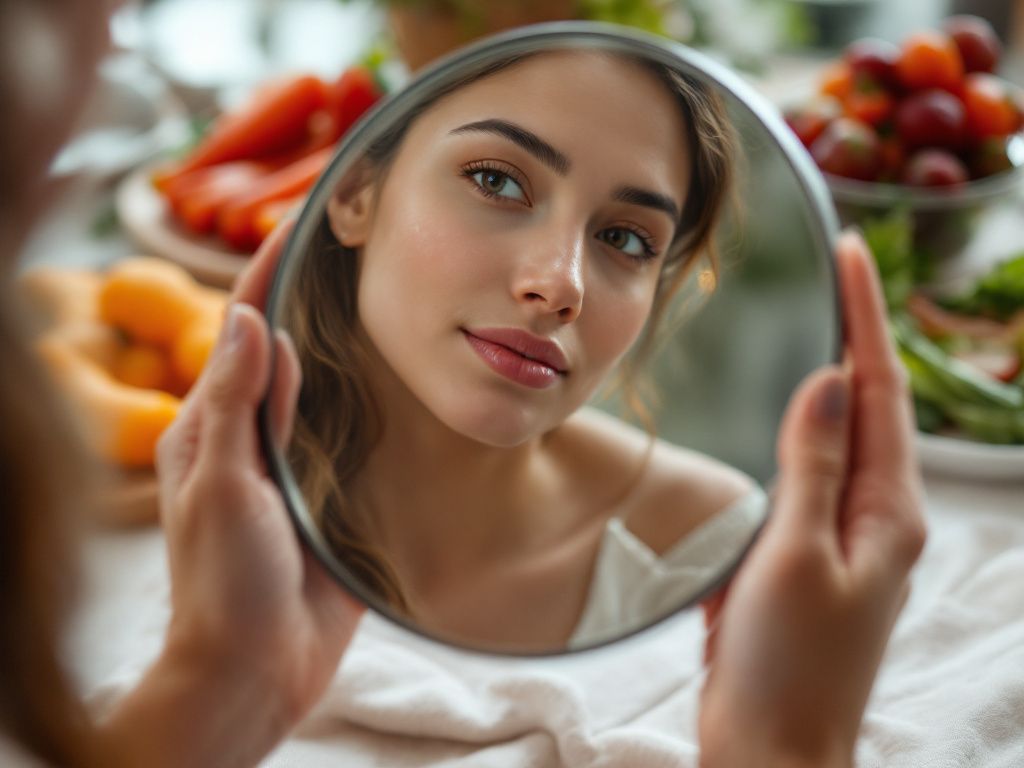Does it ever feel like your acne has signed a long-term lease on your face, with no plans of eviction anytime soon? If you’ve tried every cream under the sun and every wash on the shelf with little luck, it’s time to consider another suspect: your blood sugar. Yep, it’s not just about chocolate and greasy fries causing breakouts (although we should chat about those, too). It turns out that the internal landscape of your body, especially your blood sugar levels, plays a sneaky but significant role in the health of your skin. Intrigued? Let’s dive deeper.
Table of Contents
ToggleHow Does Blood Sugar Play the Acne Game?
Okay, here’s the scoop. Your skin is heavy-involved in the drama that is your body’s internal processes. The blood sugar impact on your skin is more straightforward than you might think, so let’s get practical.
When you eat something high in refined carbs or sugars—say, that doughnut that’s been eyeing you from the office break room—your blood sugar spikes. In response, your body releases insulin to help get that blood sugar level back to normal. Sounds simple enough, right? Except, elevated insulin levels also increase oil production in your skin. More oil usually means more clogged pores and, you guessed it, a fresh wave of pimples.
Over time, these glycemic effects can create a setting ripe for acne to thrive. Who would have thought that afternoon snack could be such a skin-breakout culprit?
The Glycemic Index: Eat Smart, Shine Less
Consider this your friendly cheat sheet: the glycemic index (GI) is basically a ranking of carbs and how they affect your blood sugar. Low GI foods cause a slower and smaller rise in blood sugar and insulin levels. High GI foods, on the other hand, make everything rise quicker than you can say “breakout.”
Here’s a random sampling of what these food categories might look like:

| **Low GI Foods** | **High GI Foods** |
|---|---|
| Oatmeal | White bread |
| Lentils | Instant rice |
| Non-starchy veggies | Pineapple |
| Quinoa | Doughnuts |
It’s all about balance. Lean more on low GI foods to keep that insulin—and, subsequently, oil—production in check.
Small Shifts: What You Can Do Right Now
Improving your skin isn’t an overnight miracle, but consider trying these tweakable options if you’re on the lookout for tangible change:
Stay Consistent with Meals
Aim to eat balanced, nutrient-dense meals consistently throughout the day to avoid spikes and crashes in blood sugar. Think fiber, protein, and healthy fats—your skin will thank you.
Read Labels Like a Detective
Many packaged foods are hiding a secret sugar agenda. Ever seen a tomato sauce bump your sugar levels? It’s more common than you think. Get into the habit of checking those labels!
Hydrate Like You Mean It

Water aids in digestion, helps regulate body temperature, and keeps those little skin cells plump and roaming freely. Boring but crucial. Treat your body to a good drink of water regularly.
Stress and Its Glycemic Sidekick
Stress doesn’t just make you feel frazzled—it can wreak havoc on your internal factors, including elevating blood sugar levels. When the body is stressed, cortisol levels increase insulin resistance, meaning your body isn’t using insulin as effectively. Prolonged stress can create the same chaotic conditions that prompt breakouts. Now isn’t life just kind sometimes?
Everything starts to circle back to a common theme: managing internal factors downright influences external skin happiness.
Take a Breather
Here’s where mindfulness steps in. Regular simple exercises such as breathing deeply, practicing yoga, or even a few sun salutations in your living room can minimize stress, helping keep insulin resistance—and acne—under control.
Sleep is Unsung
Seriously, though. Don’t underestimate the power of a good night’s rest when your skin’s involved. Sleep is when your body repairs itself; skimping on it means stress levels increase, and so will your blood sugar levels and cortisol. You get my drift. Carve out a real sleep schedule and try sticking to it, creating less chance for chaos.
Common Mistakes: What NOT to Do

Alright, time for a friendly warning:
- Binge Dieting: Cutting entire food groups overnight in a hasty bid for clearer skin can backfire. Balance is the aim here.
- Heads in the Sand: Ignoring internal factors like blood sugar and focusing solely on external skincare routines can lead to disillusionment and disappointment. Your skin wants a holistic approach.
- The “Quick Fix” Trap: From dodgy supplements to fleeting skincare trends, they promise a one-week solution to a much-rooted issue. Save your energy—and money—by steering away.
Skincare Routine Meets Internal Adjustment
It’s critical to tie these internal factors into a well-rounded skincare regimen. Proper cleansing, hydration, and protection from the sun are still key but evolved through an educated lens—firmly connecting diet internalization with topical treatment.
Final Takeaway: Building a Healthy Foundation
Acne may be pesky, nagging, and certainly maddening (believe me, I’m with you there), but with a bit of self-awareness around your internal health—particularly your blood sugar—you’ve got room to make a difference.
So, what’s next? Start small, observe any changes, and tweak as necessary. Remember: your skin is your body’s largest organ, and its outward appearance often indicates the goings-on internally. Treat it kindly, listen, experiment with these approaches, and know you’re not on this journey solo. There’s no risk in trying, and your skin may well invite you over to its glowing side sooner than you think.
Frequently Asked Questions
What is high blood sugar, and how does it affect the body?
High blood sugar, or hyperglycemia, occurs when there is too much glucose in the bloodstream, often due to the body’s inability to use or produce insulin effectively. This condition can damage various parts of the body, including nerves, blood vessels, and organs such as the kidneys, eyes, and heart. Over time, it can lead to complications like atherosclerosis, kidney disease, vision loss, and nerve damage[1][4][5).
What are the symptoms of high blood sugar?
The symptoms of high blood sugar can vary. Early symptoms include increased thirst, frequent urination, headaches, and blurred vision. Long-term symptoms may include extreme fatigue, weight loss, skin or vaginal yeast infections, and difficulty healing from cuts or sores. In severe cases, it can lead to conditions like diabetic ketoacidosis or hyperosmolar hyperglycemic state[1][5][5).
What causes high blood sugar levels in people with diabetes?
High blood sugar levels in people with diabetes can be caused by several factors, including being sick, stress, overeating foods with sugar or carbs, being less active than normal, missing doses of insulin, ineffective diabetes medication, taking steroids or other medicines, and recovering from surgery. Additionally, not following a diabetes eating plan and experiencing emotional stress can also contribute to high blood sugar[1][5][5).
What are the long-term complications of untreated high blood sugar?
If left untreated, high blood sugar can lead to serious long-term complications, including cardiovascular disease, nerve damage (neuropathy), kidney damage (diabetic nephropathy) or kidney failure, damage to the blood vessels of the retina (diabetic retinopathy) which could lead to blindness, and foot problems that can result in severe infections or amputation. It can also affect the heart, leading to conditions like heart attacks and strokes[1][4][5]).
References







